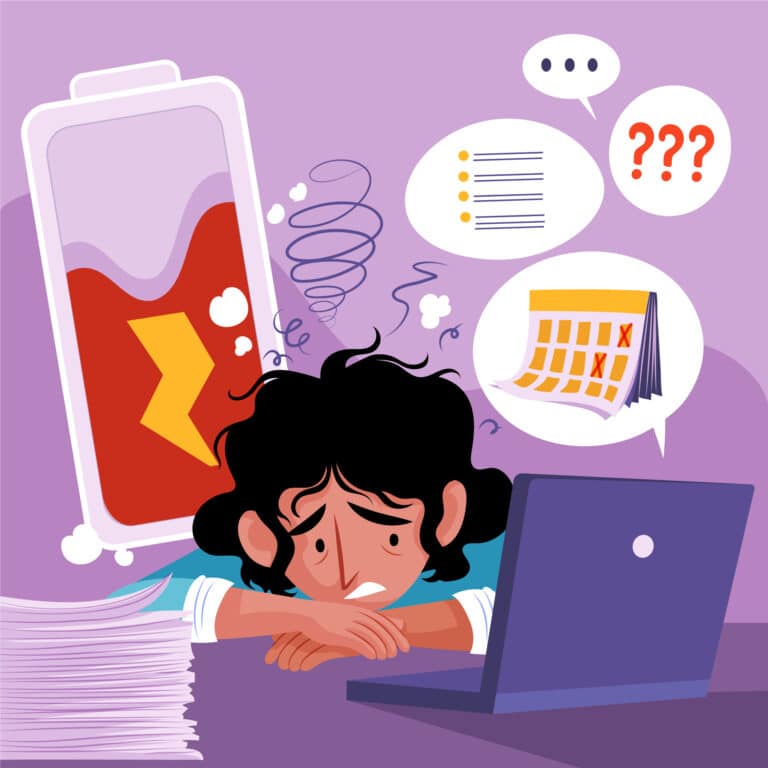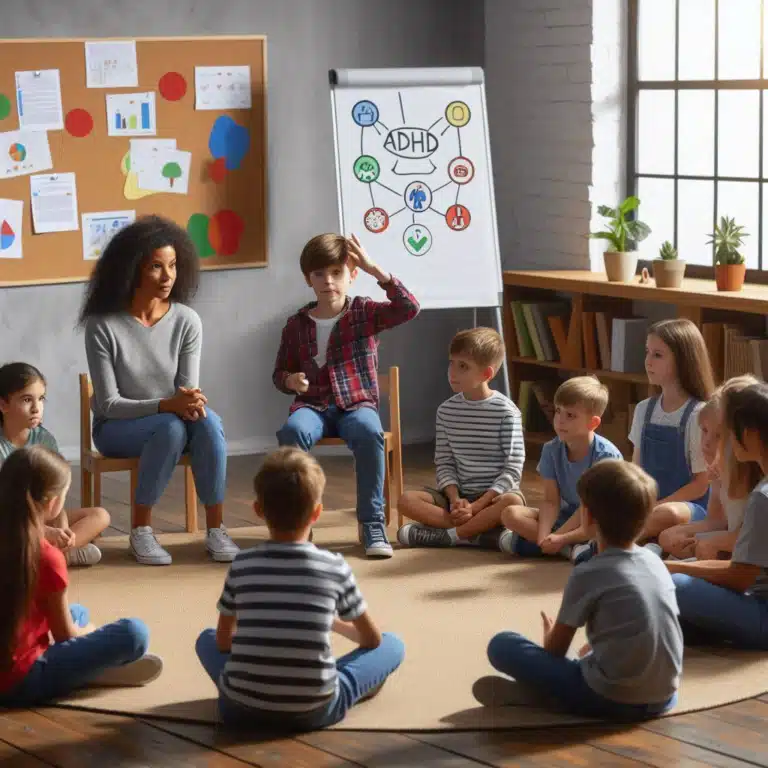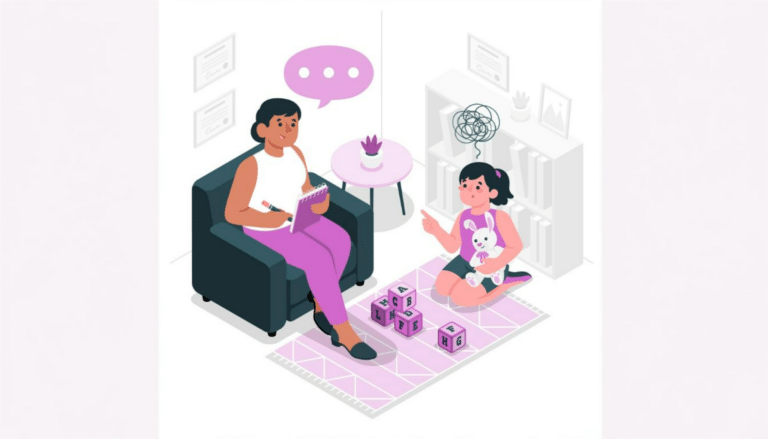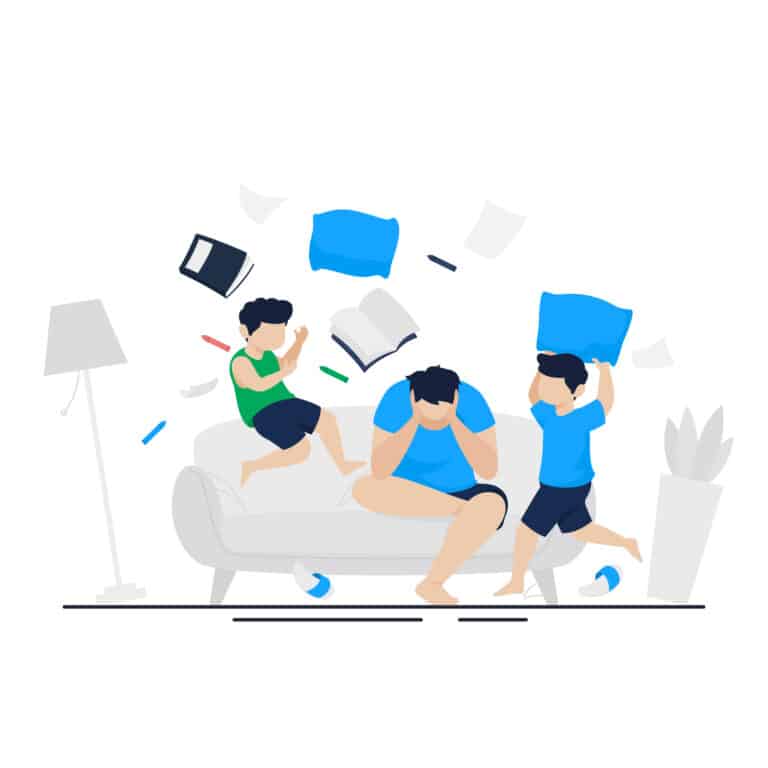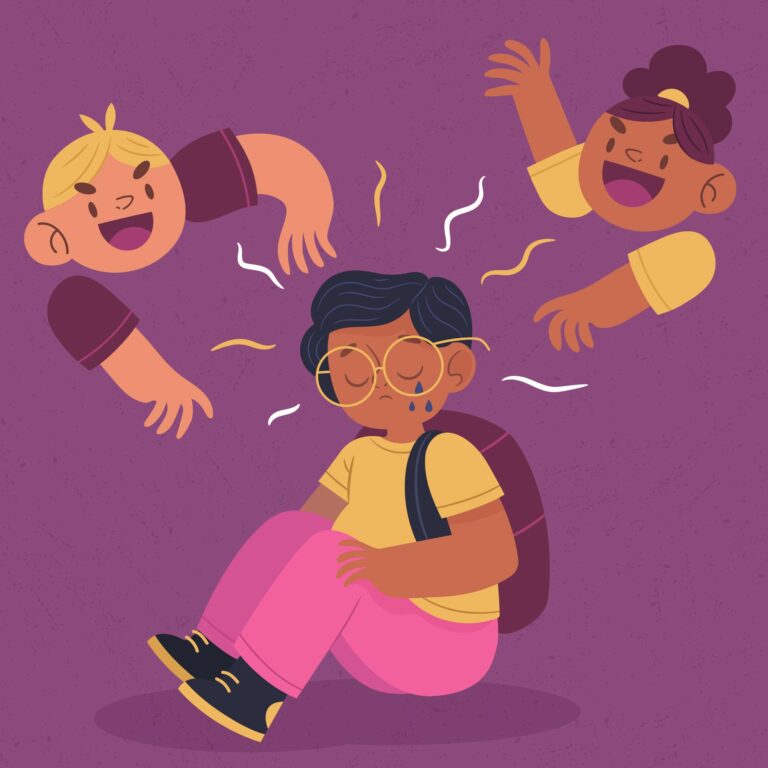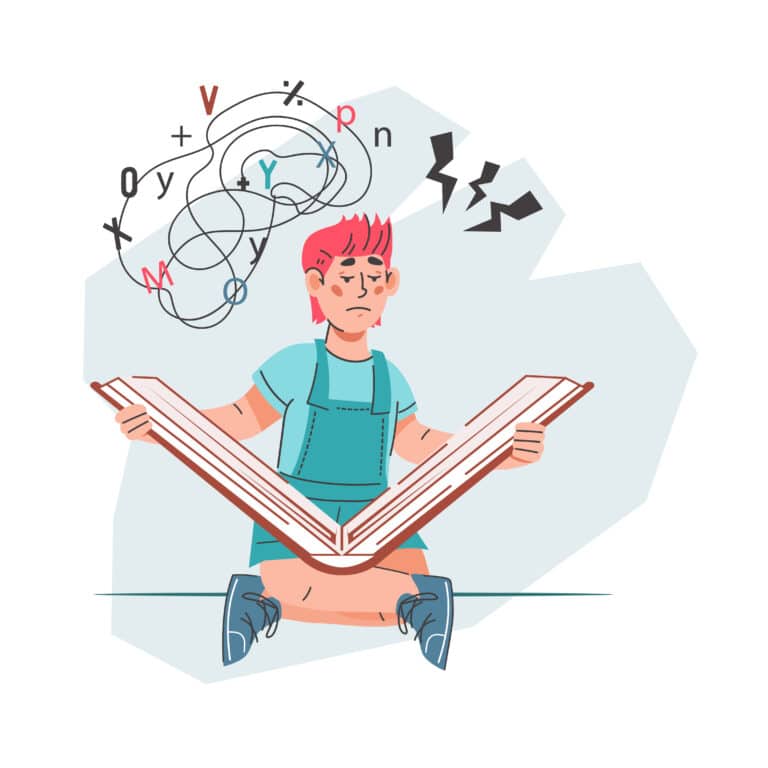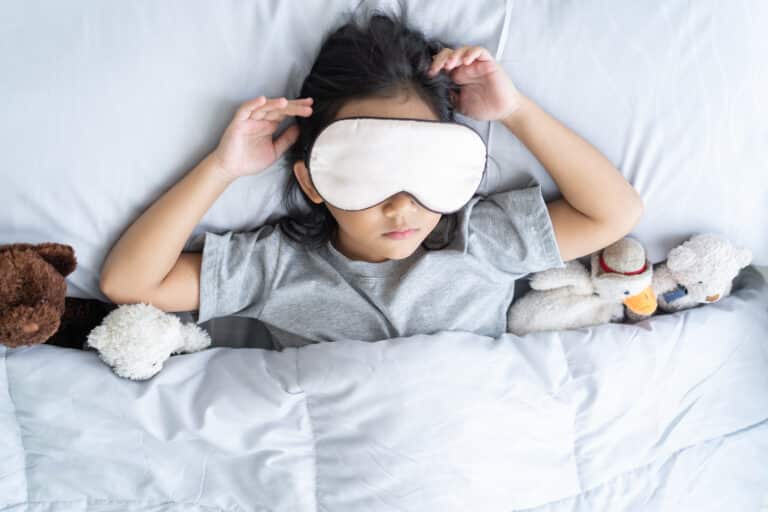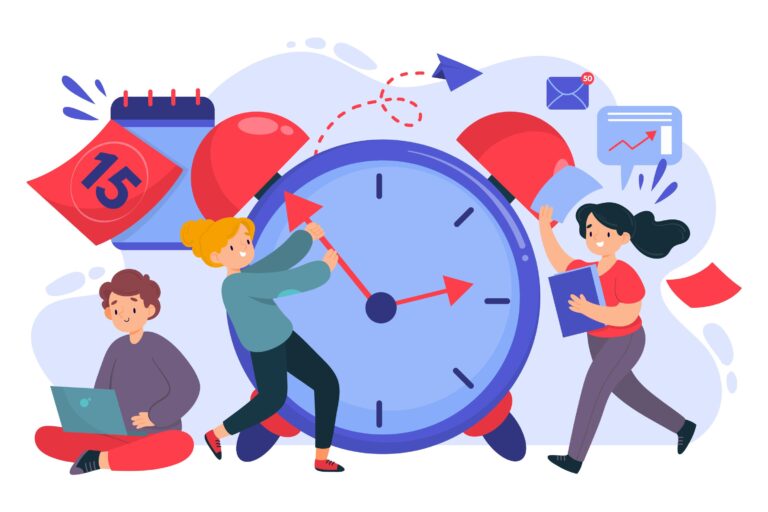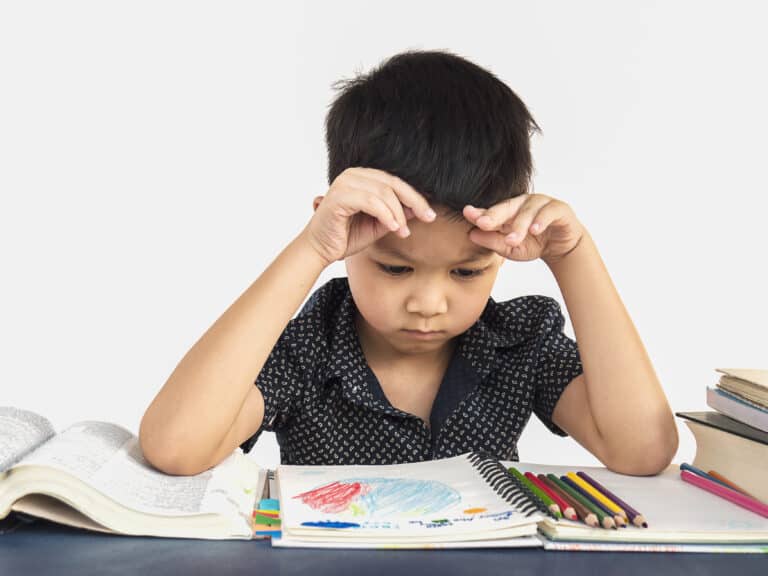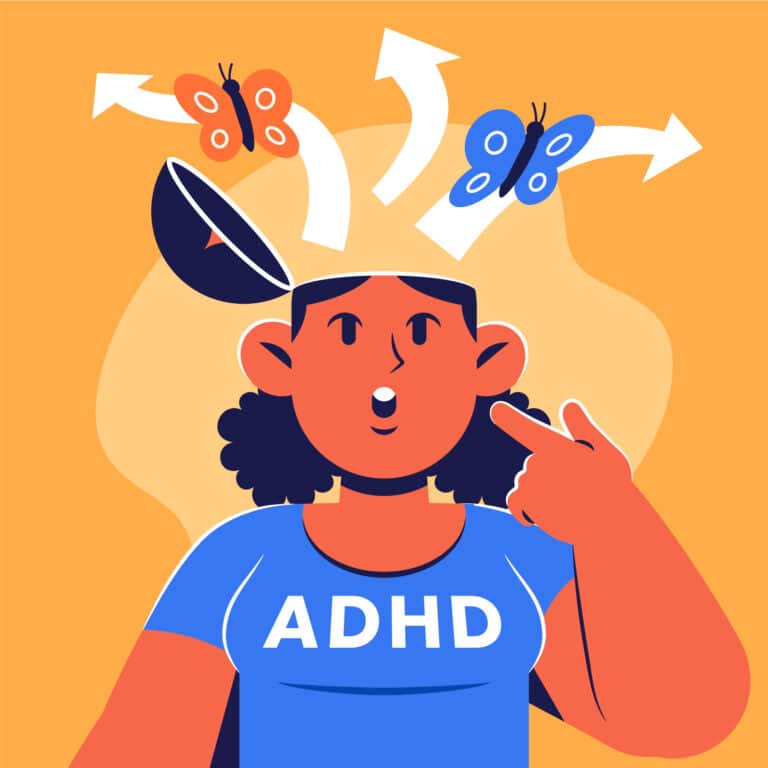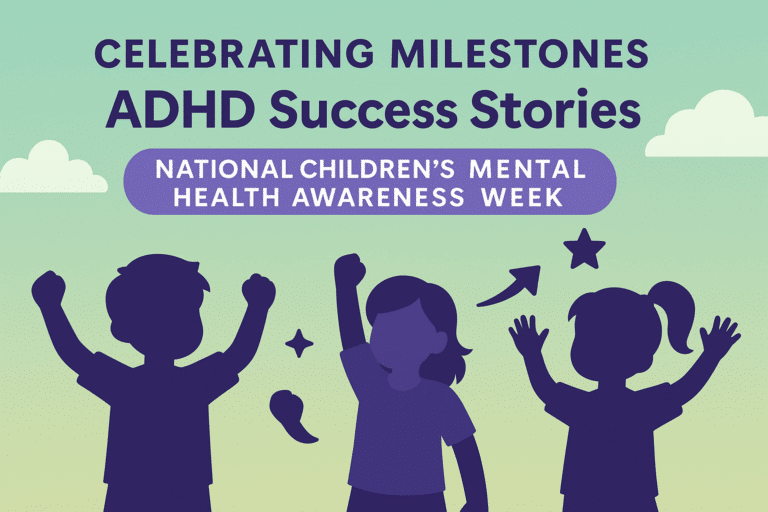Are you feeling overwhelmed by your child’s ADHD, anxiety, or depression? According to the American Psychiatric Association, these are among the most common mental health disorders in children. This comprehensive guide is designed to demystify treatment options, highlighting key aspects like early detection, medication, and behavioral strategies. By reading on, you’ll understand how therapy can address these challenges, better support your child’s emotional well-being, and learn vital tools for managing symptoms at home and school. Discover the resources and actionable steps that can genuinely make a difference in your family’s life.
Understanding ADHD, Anxiety, and Depression in Children

Recognizing the signs and symptoms of mental health conditions like ADHD, anxiety, and depression in children is a crucial first step to effective treatment. These disorders often share overlapping characteristics and can manifest differently depending on a child’s age. In my practice, I guide parents through identifying how these conditions might present and interact. Coming up, I’ll detail Managing Anxiety Course this process, affirming why it’s vital to consider both individual and combined therapies, such as psychotherapy, for holistic mental health care.
Common Signs and Symptoms in Different Ages
In my practice, I’ve noticed that young children with ADHD may exhibit incessant motion, incessant chatter, and difficulty waiting for their turn. As these children grow older, stress from constant self-regulation might lead to substance abuse or increased worry. These symptoms can escalate to panic during adolescence when the demands of life intensify. Parents often describe older children as being easily overwhelmed, leading them to use alcohol or Managing Anxiety Course as a coping mechanism, signaling an urgent need for appropriate interventions.
On the other hand, anxiety in children can appear as existential fears in young ones, but this worry morphs into social anxiety or performance-related stress in the school years. When I work with teenagers, they’ve shared experiences of panic attacks before exams or significant social events. We must watch for such transitions because early detection leads to early treatment, which can mitigate the risk of depression. In my experience, depression initially reveals itself through irritability, which can be mistaken for normal adolescent moodiness but may actually indicate a serious emotional disturbance needing attention.
How These Conditions Interact and Overlap
In my clinical experience, ADHD Focusing Course and anxiety can interweave, leading to complex challenges. Children might display ADHD symptoms like impulsivity, which fuel fears and phobias, further entrenching anxiety. This intertwined nature complicates diagnosis and treatment, as addressing only one condition may exacerbate the other. Health professionals must therefore approach with a comprehensive plan that acknowledges these facets.
Similarly, major depressive disorder often surfaces in the wake of chronic ADHD or anxiety, such as the ADHD Focusing Course, instilling a profound sense of failure in young individuals who struggle with emotional regulation. I’ve observed that these children, grappling with constant fear or addiction to coping mechanisms, can slide into depression if their foundational issues remain unchecked. It is essential to view these conditions through an integrative lens and craft individualized support strategies, such as the Managing Anxiety Course, to meet each child’s health needs.
Early Detection and Diagnosis

In my practice, I stress the importance of early intervention in treating mental health conditions in children. Timely assessments by psychiatry professionals, including a thorough evaluation for signs of ADHD, anxiety, and depression, are fundamental steps. Implementing treatments such as cognitive behavioral therapy is beneficial and often necessary. My focus in this section lies on the crucial role clinical psychology and accurate diagnoses play in mitigating the risks of long-term behavioral patterns and preventing psychological injury. Consider enrolling in an Online Educational Courses that provide an ADHD Focusing Course or a Managing Anxiety Course for further learning in this area.
We’ll delve into the significance of recognizing early signals and the comprehensive range of assessments conducted by health experts. This ensures that the treatments recommended are tailored to a child’s specific needs, setting the stage for the best possible outcomes.
Importance of Timely Intervention
I can’t stress enough how vital early intervention is for children displaying symptoms of attention deficit hyperactivity disorder, commonly known as ADHD. Through early detection and the swift involvement of a psychiatrist, we can redirect the brain’s trajectory, significantly improving a child’s ability to manage impulsivity and inattention. By acting quickly, we lay a foundation for better coping mechanisms and learning strategies tailored to each child’s unique brain development, circumventing potential pitfalls in both academic and social settings.
In my experience, when conditions like adult attention deficit hyperactivity disorder begin to manifest, they can evolve rapidly without proper guidance. Timely intervention allows us to introduce structured behavioral therapy, which can be pivotal for a child’s cognitive and emotional growth. This proactive approach facilitates better self-regulation and the development of positive behaviors, demonstrating why the early involvement of mental health professionals is crucial for a child’s lifelong well-being.
Evaluations and Assessments by Professionals
In my practice, I administer comprehensive evaluations to discern between conditions like ADHD, which may present with tics, and more severe mood disorders, such as bipolar disorder or seasonal affective disorder. These assessments are critical as they can uncover the nuanced differences between depression symptoms and behavioral manifestations of other disorders, informed by factors such as a child’s response to significant life events.
Understanding the interplay between various conditions necessitates a detailed review of a child’s history and behavior patterns by professionals. For instance, I often look for triggers that could suggest a misdiagnosis of ADHD when, in fact, the underlying issue might be a bipolar disorder, with its characteristic mood swings often mistaken for impulsivity or inattention in children. This precision is pivotal, guiding us to the correct therapeutic pathways and ensuring that we address the root cause, not just the surface-level symptoms.
Causes and Risk Factors

In my work with children, I’ve noted that ADHD and mood disorders like anxiety and depression often stem from a complex blend of genetics, environmental factors, and personal experiences. It’s crucial to examine these elements to understand the risk factors that could lead to the necessity of antidepressants or, in severe cases, approaches such as electroconvulsive therapy. Upcoming discussions will delve into genetic influences that predispose a child to such conditions, the tangible impact of their surrounding environment and lifestyle choices, as well as how trauma and stress can trigger or exacerbate these issues. This exploration not only enriches our grasp as per the Diagnostic and Statistical Manual of Mental Disorders but also empowers us with knowledge to preempt and tackle these risks effectively.
Genetic Influences
In my professional experience, the hereditary nature of conditions like ADHD, anxiety, and depression is prevalent, indicating that genetics can play a significant role. Children with a family history of mental health disorders, including anxiety and depression, have an increased susceptibility to these conditions. For instance, I’ve seen cases where even factors like low birth weight have been tied to a higher likelihood of developing ADHD, underlining the importance of a thorough family history medical review during evaluation.
Moreover, I’ve observed that certain genetic dispositions might lead to more specific manifestations, such as premenstrual dysphoric disorder in adolescent girls or the development of agoraphobia. These insights reinforce the need for a precision medicine approach, where treatments, be it stimulants for ADHD or other interventions for anxiety and depression, are chosen based on an individual’s genetic background and potential risk factors. Alleviating the pain and distress these conditions can cause, requires a nuanced understanding of the personal genetic contributions unique to every child.
Environmental and Lifestyle Factors
In my clinical observations, environmental factors such as exposure to lead have been linked with an increased occurrence of ADHD in children. Lead, often found in paint in older buildings, can adversely affect a child’s developing brain, leading to symptoms like inattention and hyperactivity. This connection underscores the need for vigilance in monitoring a child’s environmental exposures to mitigate potential risks to their mental health.
Equally significant are lifestyle influences, like inadequate sleep, which can exacerbate anxiety and lead to depressions in children. I’ve encountered numerous cases where a pattern of poor sleep triggered a cycle of stress and mood disturbances, exacerbating symptoms akin to psychological trauma. Ensuring quality sleep is critical for a child’s mind to process daily stresses and for their overall emotional resilience.
Impact of Trauma and Stress
In my time providing care for children, I’ve seen firsthand the significant impact that trauma and stress have on attention deficit hyperactivity disorder management. For instance, children exposed to traumatic events often develop symptoms of heightened irritability or, in some cases, conditions such as selective mutism. This calls for a multifaceted treatment approach where therapeutic strategies, possibly including anxiolytic medications, are employed in conjunction with behavior management techniques.
Moreover, guidelines from the Centers for Disease Control and Prevention suggest that chronic stress can disrupt a child’s ability to regulate emotions, potentially triggering or worsening mental health conditions. I’ve worked with children whose stress-induced anxiety has been so severe that it impedes their ability to concentrate, highlighting the complexities involved in treatment when these factors interplay with ADHD, anxiety, or depression.
Developing a Comprehensive Treatment Plan

In crafting a comprehensive treatment plan for children with ADHD, anxiety, or depression, I focus on realistic goals that support their executive functions and emotional well-being. It’s essential for parents to gain valuable information to help manage these conditions, which can be interconnected with substance use disorder, among other issues. I’ll discuss effective goal-setting with your child and the importance of partnering with healthcare providers to create a structured and supportive framework for your child’s mental health journey.
Setting Realistic Goals With Your Child
In my approach to addressing the mental health challenges a child may face—especially with conditions like ADHD, anxiety, or depression—I find it’s imperative to establish attainable goals together. For a child experiencing challenges with cognition and disability, having clear, achievable objectives can provide a sense of accomplishment and momentum. For instance, setting modest daily targets, such as completing a single homework task or practicing a five-minute breathing exercise, can substantially aid in building their confidence and self-regulation skills.
Research affirms the integral role of parents in the treatment of children’s mental health conditions. During treatment sessions, I’ve advised parents on creating a nurturing environment that supports their child’s development by aligning with measurable and specific goals like improving attention span or decreasing episodes of intense perspiration due to anxiety. Through my guidance, parents can adopt a proactive, supportive approach, fostering an atmosphere where children feel empowered to work toward their goals and experience progress in their day-to-day lives.
Collaborating With Healthcare Providers
In my clinical practice, the dialogue with healthcare providers is foundational to formulating a successful treatment strategy for a child suffering from ADHD, anxiety, or depression. Coordination is key, especially when prescribing medications that could include benzodiazepine, which may be necessary for cases of acute anxiety presenting with symptoms like tachycardia and chest pain. I counsel on the appropriate use of such medication, monitoring closely for side effects, and always consider non-pharmacological interventions such as exercise, which can provide long-term benefits for a loved one’s mental health.
I emphasize to parents the importance of a team-based approach when navigating their child’s mental health treatment. This includes discussions with pediatricians, child psychiatrists, and other specialists to ensure a well-rounded care plan is in place, one that considers all facets of the child’s well-being. Collaboratively, we decide when exercise might serve as a beneficial complement to therapy, offering relief from symptoms and improving overall health. By working together, we can refine treatments, making adjustments as a child grows and their needs evolve, guaranteeing that each intervention, from benzodiazepines to lifestyle changes, is tailored to support the child in achieving optimal wellness.
Medication Options for Children

As we examine medication options for ADHD, anxiety, and depression in children, I recognize the considerations my patients and their families face. Choices range from stimulant and non-stimulant medications, designed to improve symptoms of ADHD, to antidepressants and anti-anxiety prescriptions that target mental health conditions. In managing these options, my focus shifts to tracking efficacy, mitigating insomnia, and addressing the needs of those with persistent depressive disorder. Coming up, I will discuss how to closely monitor effects, manage potential side effects, and the role of exposure therapy as a coping strategy in our treatment arsenal.
Stimulant and Non-Stimulant Medications for ADHD
In my practice, the decision to use stimulant or non-stimulant medications is a significant one in managing ADHD in children. Stimulants, commonly prescribed after a systematic review of a child’s health, are generally effective at increasing attention and controlling impulsivity by enhancing neurotransmitter activity. Yet, I prioritize stress management techniques to complement these treatments, recognizing that for some patients, combining medication with relaxation techniques, supported by guidelines from the National Institute of Mental Health, can markedly improve outcomes.
Conversely, when genetics suggest a higher sensitivity to stimulants, or when side effects are a concern, I often turn to non-stimulant medications. These alternatives work differently within the brain and can be effective without some of the stimulants’ drawbacks, such as insomnia. Moreover, consistent engagement with relaxation techniques further supports management of symptoms, providing a holistic approach to maintaining focus and emotional balance for my patients.
Antidepressants and Anti-Anxiety Medications
In my practice, navigating the use of antidepressants is a delicate task, particularly in treating conditions such as pediatric depression or anxiety disorders. Mental health professionals often prescribe medications such as SSRIs that can reduce symptoms of a panic attack or mitigate the pervasive anxiety associated with a specific phobia. My goal is to ensure that, alongside medication, children are equipped with coping strategies that address their emotional and psychological needs, ultimately leading towards sustained well-being.
When dealing with pediatric panic disorder, I recommend a careful evaluation by a mental health professional to ascertain if anti-anxiety medications are required. For adults, such treatment might be more straightforward, but in younger patients, it is essential to monitor for potential behavioral changes. By doing so, we can offer each child a personalized treatment plan which not only addresses their current symptoms but also supports their overall mental health trajectory.
Monitoring Effects and Managing Side Effects
In my careful monitoring of medication effects, I pay particular attention to both behavioral changes and physical side effects like nausea or loss of appetite. It’s paramount to communicate with both the child and their guardians about potential impacts on everyday activities, including changes that might affect school performance or social interactions. Especially in cases of social anxiety disorder, where medications aim to soothe the distress associated with intense social scenarios, I watch for signals that distress may not be diminishing or if side effects are emerging, like excessive caffeine consumption leading to jitters or insomnia, which could counteract treatment benefits.
During treatment, I advise parents to be mindful of contraindications, such as the use of certain medications during pregnancy, that may necessitate adjustments. The field of psychology continuously stresses the importance of a personalized approach, where every factor is considered—from a child’s dietary habits, potentially high in caffeine, to their physical health. Rigorous documentation of any adverse reactions is critical in adapting treatment plans swiftly, ensuring that management of conditions like social anxiety disorder and ADHD remains effective and safe for each child’s unique profile.
Psychotherapy and Counseling

In my practice, I integrate psychotherapy into treatment plans for ADHD, anxiety, and depression, recognizing its effectiveness for children on the autism spectrum and those with other neurodevelopmental disorders. Cognitive Behavioral Therapy (CBT) techniques, for example, offer a structured way to understand and manage thoughts and behaviors. Additionally, play therapy can be transformative, especially with younger patients, providing a space for them to express and work through complications like sleep disorders, which might coexist with ADHD. When these approaches are applied within family therapy sessions, the nurturing of healthy dynamics can combat correlated issues such as cardiovascular disease, brought on by chronic stress. Next, I’ll discuss these modalities and how they contribute to holistic mental health care.
Cognitive Behavioral Therapy (CBT) Techniques
In my practice, I utilize Cognitive Behavioral Therapy (CBT) to assist children navigating the challenges of ADHD, anxiety, and depression, particularly when medications like methylphenidate are involved. CBT helps these children understand the connection between thoughts, feelings, and behaviors, empowering them to change negative patterns. For example, a child experiencing palpitations due to anxiety may learn through CBT how to interpret physical sensations differently, thus reducing panic and improving their emotional response.
Moreover, I’ve found that children with affective disorder who may be undergoing weight loss due to anxiety or depression benefit significantly from the structured approach of CBT. As their physician, it’s my role to guide them through exercises that reshape thinking patterns and foster healthy coping mechanisms, which can prove instrumental in mitigating the side effects of medications and reinforcing the child’s sense of control over their emotions and behaviors.
Play Therapy and Its Benefits
In my professional practice, I endorse play therapy for its proven ability to alleviate fatigue and improve attention in children grappling with ADHD. The technique, sanctioned by the Food and Drug Administration for therapeutic use, allows children a safe space to express and navigate stressors that contribute to their mental health challenges. Through this medium, youngsters can confront issues stemming from conditions like oppositional defiant disorder, doing so in a context that fosters emotional healing and resilience.
Guiding a child through play therapy, I observe their interactions and behaviors which often reveal the underlying causes of anxiety or depression. This form of therapy grants children a voice they may not have in traditional talk therapy, and it’s an avenue where they can process and articulate their experiences with minimal barriers. This method is particularly effective for children who might otherwise struggle to express their feelings due to stress-induced fatigue, offering them a vibrant alternative to engage and develop coping strategies.
Family Therapy Sessions
In my clinical practice, I’ve found family therapy sessions to be a cornerstone in the treatment of childhood nervous system disorders such as ADHD. They provide a structured environment to cultivate social skills and manage shyness, crucial areas impacted by disorders. These sessions facilitate a shared understanding within the family unit, fostering support and effective communication that is crucial for children battling depressive disorder.
Guiding families through therapy, I frequently reference insights from the Anxiety and Depression Association of America to reinforce strategies that improve familial relationships. This approach not only bolsters the child’s support system but also helps parents and siblings recognize patterns that may affect the child’s emotional wellbeing, creating a cohesive and empathetic approach to handling their anxiety and depression.
Behavioral Strategies at Home and School

In my practice, I emphasize the significance of behavioral strategies at home and school for managing ADHD, anxiety, and depression in children. Fostering routine and structure can mitigate risk factors associated with these health conditions, aiding in a child’s learning and development. Techniques such as positive reinforcement methods also play a key role, as do partnerships with educators—each forming a component of a holistic approach to treatment. Insights from the National Alliance on Mental Illness further underline the importance of integrating these strategies to ensure healthy heart rates and emotional regulation in young patients.
Implementing Routine and Structure
In my clinical practice, developing a stable routine and structure at home and at school has proven to be a successful strategy for managing ADHD, anxiety, and depression in children. Guidelines from the American Academy of Pediatrics corroborate that a consistent daily schedule provides a reliable framework that can alleviate a wide array of symptoms, from the impulsivity seen in conduct disorder to the dysregulation characteristic of anxiety and depression. For instance, I’ve seen significant behavior improvements in children when meals, homework, and bedtime are consistent, aiding in their overall mental health management.
From the outcome of clinical trials, we understand that children, especially those experiencing chronic pain or emotional distress, benefit from the predictability that a structured routine offers. As a healthcare professional, I’ve implemented management strategies that incorporate regular sleep patterns and designated times for relaxation, which have notably reduced symptoms of anxiety and depression. This structure acts as a solid foundation to support children as they navigate the challenges associated with their conditions, fostering a sense of security and control over their environment.
Positive Reinforcement Methods
In my practice, I’ve witnessed the profound impact that positive reinforcement methods can have on a child with ADHD, anxiety, or depression. Statistics in neurology and behavioral science show that consistent affirmation and rewards for desirable behaviors can rewire neural pathways, supporting better focus and emotional regulation. My role often involves advising parents on integrating these techniques immediately following a positive act, enhancing the association between action and reward during their children’s physical examination and daily activities.
As a professional in child psychology, I’ve seen significant progress in patients whose families and educators employ positive reinforcement consistently. These methods serve not only to acknowledge a child’s successes but also to boost their self-esteem and encourage persistence. In cases where a patient might struggle with a particular task, a psychologist might suggest a tailored rewards system that aligns with the child’s interests, resulting in more effective and rewarding treatment outcomes.
Collaborating With Educators
In my discussions with educators, I advocate for a collaborative approach that takes into account not just academic performance but also the student’s mental health. I’ve seen instances where children on ADHD medicine experience dizziness, a side effect that may necessitate school adjustments. Educators who understand these potential reactions are better equipped to provide support and can work with healthcare providers to mitigate impacts on learning and wellbeing.
Furthermore, I stress the importance of monitoring children’s screen time, especially those prone to anxiety, as excess exposure can exacerbate symptoms. My experience aligns with Mayo Clinic’s guidelines, which suggest structured screen time as part of an overall behavioral strategy to minimize side effects like disrupted sleep patterns. Working closely with teachers ensures that screen time at school is purposeful and doesn’t detract from a child’s overall treatment plan.
Lifestyle Changes and Supportive Practices

In managing mental health conditions in children, such as ADHD, anxiety, and depression, I recognize the profound effect lifestyle changes can have alongside clinical treatments like SSRIs, talk therapy, and education. Ensuring a balanced nutrition and diet is imperative, as it directly influences brain function and muscle health. I also advocate for the importance of integrating physical activity and mindfulness practices into daily life, affirming these as foundational to a child’s well-being. Additionally, I emphasize the benefits of limiting screen time in favor of good sleep hygiene, a practice that not only supports mental clarity but also solidifies healthy habits for a lifetime.
Importance of Nutrition and Diet
Through my years of treating children with ADHD, anxiety, and depression, I’ve found that a well-balanced diet contributes significantly to managing symptoms such as restlessness and maintaining stable moods. I’ve even seen improvements in comorbid conditions like irritable bowel syndrome, which often coexists with anxiety, reinforcing the interconnection between gut health and mental well-being. A nutrient-rich diet, informed by a fact sheet from reputable sources, can help mitigate the potential for a personality disorder to develop and support a child’s overall growth.
Time and again, I’ve advised parents that proper nutrition can be a game-changer for children dealing with these mental health challenges. By minimizing processed foods and increasing the intake of omega-3 fatty acids, we can reduce inflammation in the body that might contribute to symptoms of depression and anxiety. Helping families understand that nutritional strategies should complement, rather than replace, traditional therapies is part of my role in ensuring a comprehensive approach to each child’s mental health care.
Encouraging Physical Activity and Mindfulness
In my professional experience, incorporating physical activity into a child’s routine can profoundly affect their mental health, particularly for those with chronic conditions such as ADHD. Regular exercise boosts the production of neurotransmitters like dopamine, which plays a crucial role in the pleasure and reward systems. Such biological changes have positive repercussions not only on emotional regulation but can also benefit the gastrointestinal tract, leading to improvements in digestion and overall physical health, factors often overlooked in children with anxiety or depression.
Additionally, I encourage mindfulness as an essential practice for children facing mental health challenges. Mindfulness techniques can create a sense of calm and offer relief from the incessant stimulus of daily life, which is especially valuable for children prone to anxiety. By teaching young patients mindfulness, they can develop resilience against stress, which is beneficial in preventing postpartum depression in adolescents and reducing the need for drugs as a coping mechanism. This holistic approach empowers children to manage their symptoms and fosters long-term well-being in coping with ADHD, anxiety, and depression.
Limiting Screen Time and Promoting Sleep Hygiene
In my practice, I advise families on the critical importance of reducing screen time to improve mood regulation in children with ADHD, anxiety, and depression. The National Institutes of Health supports findings that excessive screen exposure, especially before bedtime, can disrupt the natural production of serotonin—a key neurotransmitter in mood stabilization—and impair sleep quality. As such, I emphasize creating an environment that promotes winding down without electronics, fostering both mental calming and healthier sleep patterns.
Moreover, drawing from resources like MedlinePlus, I guide parents in establishing robust sleep hygiene practices that benefit children’s mental health. I’ve seen noticeable improvements in children’s ability to manage stress and maintain focus when they adhere to a consistent bedtime routine and sleep in a tech-free environment. This approach supports the intricate interplay between sleep, gene expression, and neurochemistry, ultimately enhancing emotional balance and cognitive function in young individuals managing these complex health conditions.
Educational Support and Accommodations

In my practice, I’ve seen how crucial educational support and accommodations are for children challenged by ADHD, anxiety, and depression. Delving into Individualized Education Programs (IEPs) offers tailored strategies that resonate with the needs of those on the autism spectrum or with other neurodevelopmental disorders. Partnering with teachers, healthcare providers, and leveraging therapeutic options like amphetamines or neurotransmitter-targeting medications are part of a comprehensive plan. We’ll examine how working closely with school counselors and teachers and advocating for your child’s educational requirements can lead to more favorable outcomes.
Understanding Individualized Education Programs (IEPs)
In my work with children who have ADHD and other conditions, such as Tourette syndrome, I’ve found that Individualized Education Programs (IEPs) are an essential tool for addressing their unique learning needs. IEPs are developed through a collaborative effort that often includes teachers, parents, healthcare providers, and when appropriate, the use of electroencephalography (EEG) data to inform accommodations. This process takes into account a child’s prevalence for certain behaviors and learning styles to create a supportive academic environment that can adapt to their needs, from modified homework assignments to tailored communication methods.
Understanding an IEP means recognizing that it’s more than just an educational plan; it’s a strategic approach to ensuring a child who may exhibit signs of psychosis or other mental health issues gets the necessary support and resources to succeed. As a mental health professional, I’ve consulted on IEPs that blend therapeutic strategies with educational goals, which can significantly enhance a student’s academic performance and mental well-being. Through these actionable insights, parents and educators can navigate the complexities of ADHD, anxiety, and depression, providing a framework that helps students thrive both in and out of the classroom.
Working With School Counselors and Teachers
In my work, collaborating with school counselors and teachers has been instrumental in establishing tailored support systems for children with ADHD, anxiety, and depression. These educators are often the first to notice when a child might benefit from relaxation techniques or even adjustments to medication, such as a beta blocker in cases of anxiety-induced palpitations. They are pivotal in identifying behavioral changes suggestive of conditions like antisocial personality disorder, which can greatly impact peer relationships and learning.
Furthermore, the insight that teachers and counselors provide is valuable in fine-tuning the diagnosis and treatment plans. Involving school staff in discussions about medications such as atomoxetine for ADHD or classroom strategies helps ensure that every aspect of the child’s day-to-day functioning is considered. This collaborative approach enhances the child’s well-being and academic success, creating a supportive network that attends not only to their educational needs but also to their mental health.
Advocacy for Your Child’s Educational Needs
In my practice, I’ve observed that children with ADHD and associated conditions often struggle with executive dysfunction, which can significantly impact their academic performance. This is where advocacy becomes critical—by actively engaging with educators and school administrators, parents can secure necessary accommodations that directly address their child’s unique needs. I encourage families to be vocal within their community, ensuring that the specific educational requirements of their child’s central nervous system disorder are met with comprehensive support. These steps not only facilitate a conducive learning environment but also bolster the child’s self-esteem and academic growth.
Additionally, in cases where a child’s mental health condition might lead to increased levels of anxiety or aggression, I emphasize the importance of preemptive advocacy to mitigate instances of violence or classroom disruptions. It is essential to work collaboratively with school counselors and community resources to develop plans that manage these risks effectively. Proactive engagement can help in crafting an educational approach tailored to buffer the child against the challenges posed by their condition—promoting an atmosphere where their central nervous system health is as much a priority as their education.
Supporting Your Child’s Emotional Well-Being

In my approach to treating ADHD, anxiety, and depression in children, I focus on bolstering their emotional well-being. Addressing grief and guiding kids through the impact of bullying are fundamental. With a keen understanding of the influence of neurotransmitters like norepinephrine on mood and behavior, I work on building resilience and self-esteem, creating open communication strategies, and recognizing as well as responding to emotional cues. These practices form an essential part of the organizational framework for comprehensive care, equipping children to navigate their emotional landscape with confidence.
Building Resilience and Self-Esteem
In my capacity as a health care provider, I have observed that nurturing resilience and self-esteem is vital for children grappling with ADHD, anxiety, or depression. Reinforcing positive self-worth can be especially crucial for those also facing an eating disorder, which often accompanies emotional dysregulation. Working closely with caregivers and providing nutritional counseling as part of their treatment, I emphasize the importance of a balanced diet in maintaining both physical health and emotional stability.
Through my interactions with patients and as part of a primary care team, I’ve witnessed the transformation in children who receive consistent support and acknowledgment of their strengths. This approach is fundamental to their emotional development, empowering them to manage their symptoms more effectively. By celebrating small victories and displaying unwavering belief in their capabilities, we provide a nurturing environment that is conducive to building the resilience and self-esteem necessary for their journey to wellness.
Open Communication Strategies
In my role as a caregiver and mental health professional, I often emphasize the necessity of nurturing amygdala-regulating communication strategies between parents and their children. For instance, when engaging in OCD therapy, establishing dialogue that validates a child’s experiences and feelings leads to better emotional regulation and reduction in compulsive behaviors. These tailored conversations assist in dismantling barriers typical of an avoidant personality disorder, strengthening trust and intimacy within the family dynamic.
Moreover, managing the effects of ADHD, characterized by an intense state of hyperfocus, calls for open and regular communication that can help redirect a child’s concentration toward productive outcomes. By applying clear and adaptive dialogue techniques, parents and therapists can guide children in developing awareness of their mental states, offering a pathway to balance hyperfocus with broad, engaged attention, supporting their overall emotional and academic success.
Recognizing and Responding to Emotional Cues
In my practice, I stress the significance of honing attention spans and recognizing the hormonal shifts that underpin a child’s emotions. Heightened understanding of these nuances enhances the overall quality of life for children with ADHD, anxiety, or depression. For instance, I’ve observed that a child’s brief distraction or sudden irritability could indicate an imbalance of brain chemicals like serotonin, requiring a timely and empathetic response that might include a medication adjustment, like the introduction of escitalopram when deemed appropriate.
There’s a profound skill in identifying and properly responding to the subtle cues a child may display; doing so can profoundly affect treatment outcomes. If a child’s behavior changes abruptly, it typically signals a deeper emotional issue, necessitating a closer look at whether their current regimen supports optimal brain chemical balance. My aim is always to intervene early and adjust support, potentially involving changes in therapy or medications, to stabilize these brain chemical fluctuations and sustain a young person’s emotional equilibrium.
Resources for Parents and Caregivers

In my efforts to support parents and caregivers, I understand the weight of comprehensive resources in managing children’s ADHD, anxiety, and depression. Finding online support groups and communities, accessing financial and legal assistance, and seeking continuing education and training can significantly ease this journey. Each of these areas offers a lifeline, from connecting with others navigating similar challenges, perhaps discussing ADHD diagnosis online, to understanding complex aspects such as the appropriate dose or exploring options like brain stimulation therapy. My upcoming discussion will lay out the practical insights and valuable resources available through platforms such as PubMed, ensuring you have the knowledge and support needed for your child’s well-being.
Finding Support Groups and Communities
In my professional capacity, I’ve seen the profound impact that support groups and communities can have for families tackling ADHD, anxiety, or depression in pediatric cases. Such networks offer a haven for sharing experiences and strategies—like integrating physical activity to combat screen time inertia or anxiety, and finding age-appropriate screening tools—that can significantly ease the stress of managing these conditions. The collective wisdom and empathy found within these groups act as a much-needed pillar for parents and caregivers, fostering mutual learning and empowerment at every stage of the child’s journey.
Moreover, I’ve witnessed how exposure to these communities often illuminates underrecognized facets of treatment, such as the use of diazepam in safely addressing acute anxiety episodes like stage fright. Among parents navigating similar paths, there are invaluable insights regarding when to opt for such interventions, or how to balance treatment with holistic care. This exchange of knowledge frequently leads to more informed decisions, enhancing the well-being of both the child and their family as they collaborate with health professionals in pediatrics for optimal outcomes.
Accessing Financial and Legal Assistance
In my practice, I’ve seen the relief that comes when parents find financial support to cover treatments for developmental disorders like ADHD and dyslexia. Access to medications such as venlafaxine, crucial for severe cases of depression, can be financially demanding, but there are programs and health insurances that can alleviate these costs. Moreover, staying well-versed with the latest updates in the International Classification of Diseases helps in advocating for insurance coverage, as it ensures treatments are recognized as medically necessary.
I’ve also guided families in navigating the complex legal accommodations required by schools, such as extra exam time for children with ADHD. These accommodations become imperative to a child’s educational success and, fortunately, relevant legislation often backs parents in these efforts. Understanding one’s legal rights can empower families to secure the needed resources, thereby enabling a child to thrive despite their challenges.
Continuing Education and Training Opportunities
I understand how empowering it is for parents to deepen their knowledge on managing ADHD, anxiety, and depression in children. This is why I advocate for continuous education opportunities that unpack the complexities of these conditions, including the role of the anterior cingulate cortex in emotional regulation and the impact of social anxiety on memory and learning. Workshops or online courses often cover diverse subjects like the neurobiology of stress, or how the efficacy of reuptake inhibitors can alleviate pressure on a child’s developing brain, providing caregivers with actionable insights to support their children more effectively.
In my practice, I’ve observed the benefits when parents engage in training that enhances their understanding of the treatments and therapies used for these childhood conditions. For example, knowledge of how behavioral therapies complement medication management, often reducing the need for increased doses, can inspire parents to incorporate supportive practices that enhance the overall care plan. Such educational experiences can empower parents to become effective co-managers of their child’s mental health, resulting in greater long-term well-being for the whole family.
Frequently Asked Questions
What are the signs of ADHD in children?
Recognizing ADHD in children often involves noticing persistent patterns of inattention, hyperactivity, and impulsiveness that are developmentally inappropriate and disruptive to functioning.
How are anxiety and depression diagnosed in kids?
Diagnosing anxiety and depression in children involves comprehensive evaluations by healthcare professionals, typically with psychological assessments, behavioral observations, and discussions with guardians to understand their emotional and behavioral changes.
Can lifestyle changes improve my child’s mental health?
Absolutely, positive lifestyle adjustments such as balanced nutrition, regular exercise, and sufficient sleep can significantly bolster your child’s mental health and well-being.
What educational accommodations help children with ADHD?
Educational accommodations for children with ADHD often include tailored seating arrangements, frequent breaks, modified homework, and the use of assistive technology.
How can I support my child’s emotional well-being at home?
Supporting your child’s emotional well-being involves active listening, consistent routines, and expressing love and acceptance in your daily interactions at home.
Conclusion
Addressing ADHD, anxiety, and depression in children demands early, accurate diagnosis and a holistic treatment approach. Interdisciplinary collaboration between healthcare providers, educators, and parents is critical to ensure personalized care and optimal outcomes. Techniques like medication management, psychotherapy, and practical behavioral strategies must be tailored to each child’s unique needs, reinforcing their emotional well-being and academic success. Ultimately, this comprehensive guide underscores the profound importance of nurturing both the mental health and future potential of our youth.








